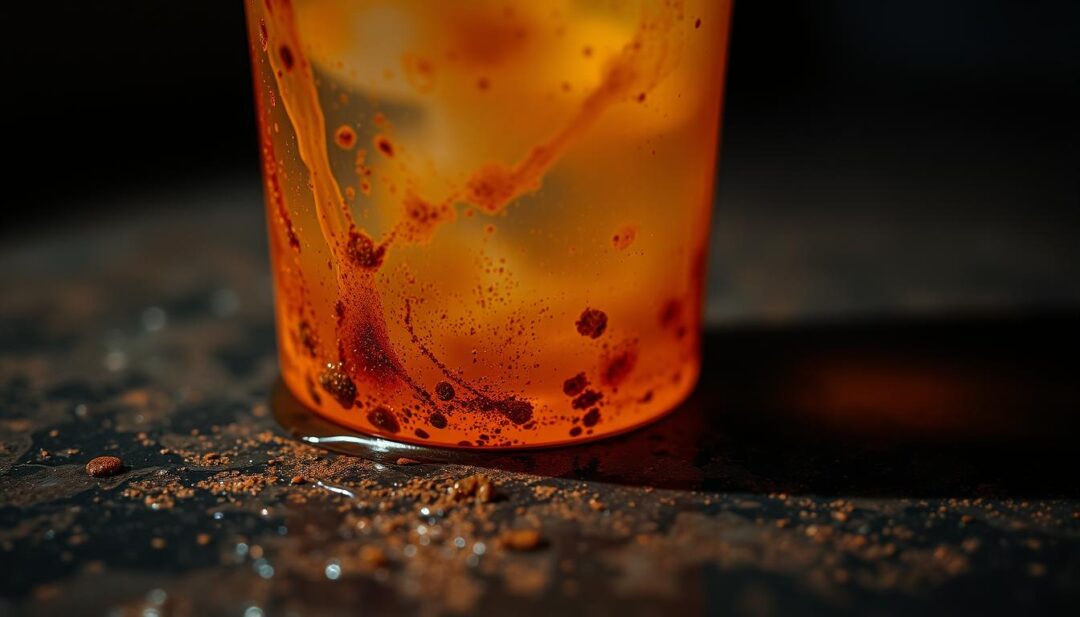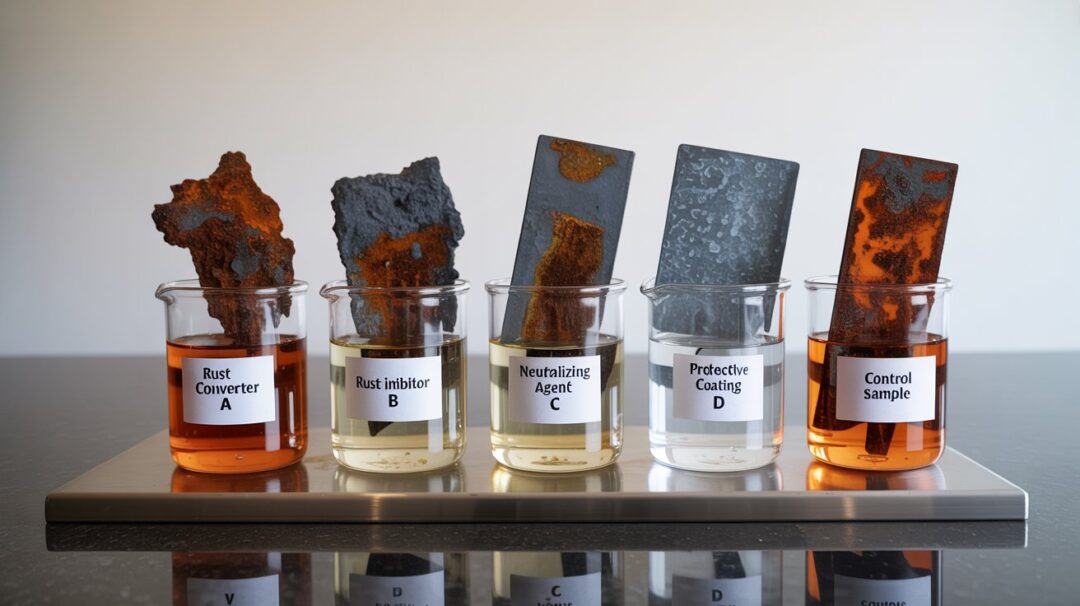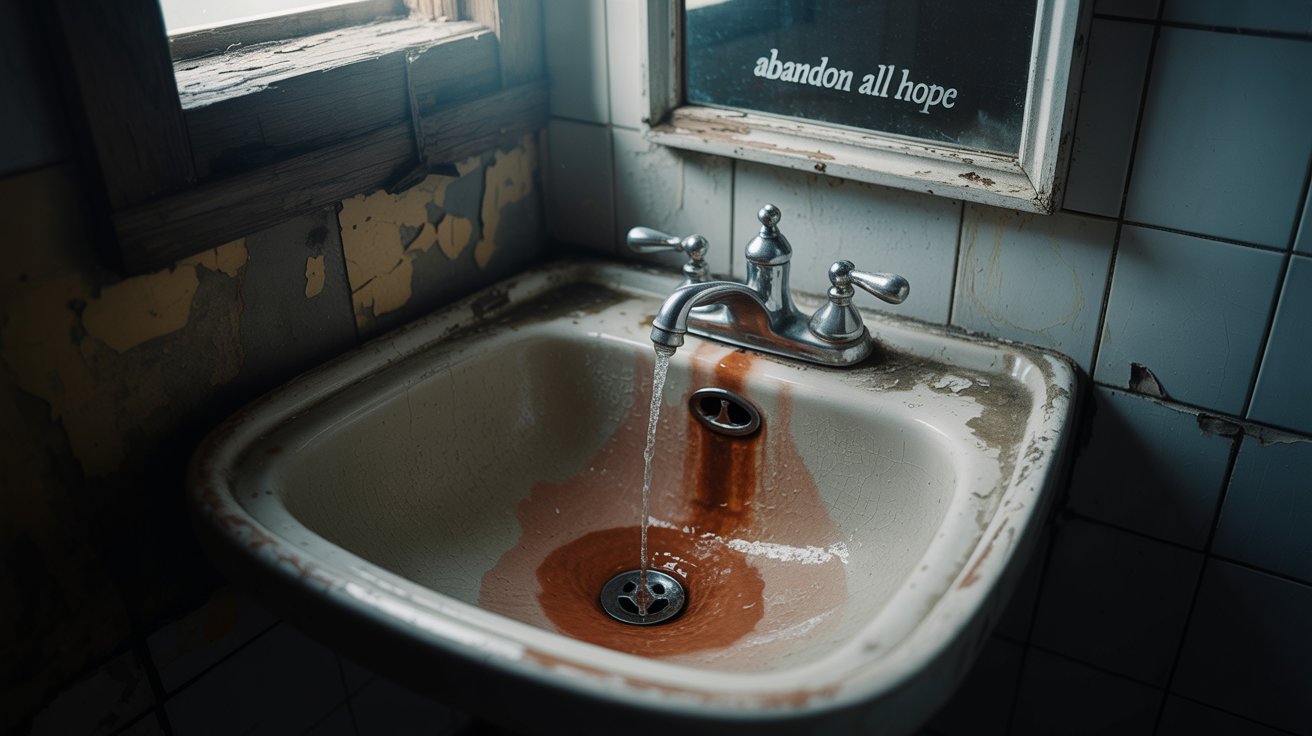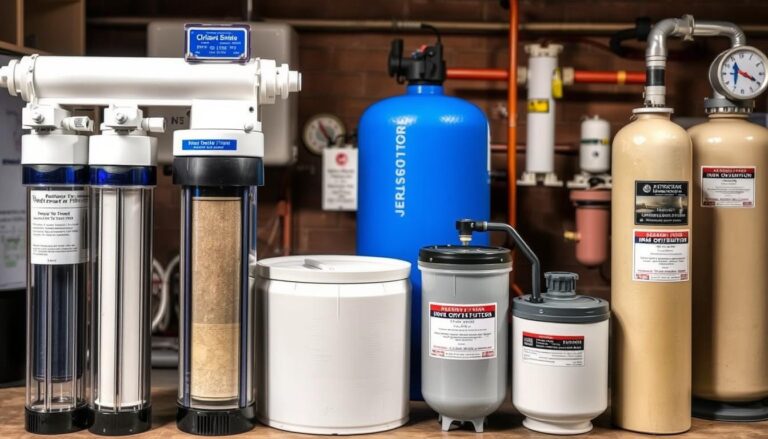How to Control Rust in Homes with Well Water
Rusty well water is a common issue that can cause unsightly stains and damage to household appliances, as noted by David Brewster in his article on June 15, 2023. Homeowners with well water often struggle with the removal of rust and the prevention of its buildup.
Controlling rust in homes that use well water is crucial for maintaining a safe and healthy living environment. The presence of rust can lead to costly repairs and replacements of appliances and plumbing fixtures.
Key Takeaways
- Understanding the causes of rust in well water
- Methods for removing rust from well water
- Preventing rust buildup at home
- Importance of regular maintenance
- Effective solutions for rust control
Understanding Rust in Well Water
Understanding the causes of rust in well water is crucial for effective home water treatment for rust. Rust in well water is primarily caused by the presence of iron, which can enter the water supply through various natural and man-made processes.
What Causes Rust in Well Water
Rust in well water is typically a result of iron reacting with oxygen. The iron can come from the natural breakdown of iron-bearing rocks and soil or from the corrosion of iron pipes and fixtures in the well or home plumbing system.
Types of Iron in Well Water: Ferric, Ferrous, and Bacterial
There are several types of iron that can be present in well water, including ferric iron, ferrous iron, and bacterial iron. Ferric iron is typically visible as reddish-orange particles, while ferrous iron is dissolved in the water and often not visible until it oxidizes. Bacterial iron is associated with the presence of iron bacteria, which can cause slimy deposits and unpleasant odors.
How Iron Enters Your Home’s Water Supply
Iron enters the home’s water supply primarily through the well water source. As groundwater moves through the ground, it can pick up iron from the surrounding soil and rocks. Additionally, older iron pipes can corrode, releasing iron into the water.
| Type of Iron | Characteristics |
|---|---|
| Ferric Iron | Visible as reddish-orange particles |
| Ferrous Iron | Dissolved in water, oxidizes when exposed to air |
| Bacterial Iron | Associated with iron bacteria, slimy deposits, and unpleasant odors |
Signs of Rust Problems in Your Home
Recognizing the signs of rust contamination in well water is the first step towards addressing the problem effectively. Rust issues can manifest in various ways, affecting not just the aesthetic appeal of your home but also the integrity of your plumbing and appliances.
Visible Rust Stains on Fixtures and Appliances
One of the most noticeable signs of rust in well water is the appearance of reddish-brown stains on fixtures and appliances. These stains can be particularly problematic on sinks, toilets, and washing machines, as they can be difficult to clean and may leave permanent marks.
Water Discoloration and Taste Issues
Rust contamination can also cause your water to appear discolored or have an unpleasant metallic taste. This is often due to the presence of iron particles, which can be both a nuisance and a health concern. For more information on how to address these issues, you can visit This Old House’s guide on removing rust and iron from well.
| Signs | Description | Potential Impact |
|---|---|---|
| Visible Rust Stains | Reddish-brown stains on fixtures and appliances | Aesthetic damage, difficult to clean |
| Water Discoloration | Water appears cloudy or has a reddish tint | Affects water quality, potential health concern |
| Metallic Taste | Water has an unpleasant metallic taste | Affects drinking water quality, potential health concern |
Plumbing and Appliance Damage
Prolonged exposure to rust-contaminated water can lead to significant damage to your home’s plumbing and appliances. This can result in costly repairs and replacements, making it essential to address rust issues promptly.
By being aware of these signs and taking proactive steps, homeowners can effectively manage well water rust issues and prevent more severe problems from developing.
Testing Your Well Water for Iron and Rust
Testing your well water for iron and rust is a crucial step in maintaining a safe and healthy water supply. Regular testing helps identify potential issues before they become major problems, ensuring your water remains clean and safe for use.
DIY Testing Methods
For homeowners who prefer a hands-on approach, DIY testing kits are available. These kits usually include test strips or a colorimetric test that changes color based on the iron concentration in your water. While DIY kits are convenient and cost-effective, they may not provide the most accurate results, especially for complex water chemistry.
Professional Water Testing Services
For more accurate and comprehensive testing, consider hiring a professional water testing service. These experts use specialized equipment to measure iron levels and other water quality parameters. According to recommendations, professional testing is the best way to get accurate measurements of iron levels in your well water.
Understanding Test Results and Acceptable Levels
Once you have your test results, it’s essential to understand what they mean. The Environmental Protection Agency (EPA) sets guidelines for acceptable levels of iron in drinking water. While iron is not considered a health risk at typical levels, it can cause aesthetic issues like discoloration and unpleasant taste.
| Iron Level (mg/L) | Description | Recommended Action |
|---|---|---|
| 0 – 0.3 | Low iron level, typically not problematic | Monitor levels, maintain current treatment |
| 0.3 – 1.0 | Moderate iron level, may cause some staining | Consider iron removal systems |
| >1.0 | High iron level, likely to cause significant staining and taste issues | Implement iron removal treatment |
Understanding your test results and taking appropriate action is key to maintaining clean well water free from rust. Whether you choose DIY testing or professional services, regular monitoring is crucial for ensuring your water supply remains safe and healthy.
Health Implications of Rust in Well Water
Rusty well water may not just be an aesthetic issue; it can also pose health risks that homeowners should be aware of. While iron is generally not considered harmful to health, high levels can cause issues.
Is Rusty Water Safe to Drink?
In most cases, rusty water is not immediately dangerous to drink, but it can affect the taste and appearance. However, it’s crucial to test the water to determine the level of iron and other potential contaminants.
Potential Health Concerns
High levels of iron in water can lead to gastrointestinal issues in some individuals. Moreover, the presence of certain bacteria that thrive in iron-rich environments can pose additional health risks.
When to Be Concerned About Water Quality
If you notice persistent discoloration or taste issues, it’s a sign that you should investigate further. Regular testing and maintenance of your well water system are key to preventing rust buildup at home and ensuring safe drinking water.

How to Control Rust in Home That Uses Well Water: Comprehensive Strategies
To tackle rust issues in well water, homeowners need to adopt comprehensive strategies that address both immediate problems and long-term prevention.
Immediate Actions for Existing Rust Problems
For homes currently dealing with rust in their well water, immediate action is crucial. “The first step in addressing rust issues is to assess the extent of the problem,” says water treatment expert, John Smith. Shock chlorination can be an effective immediate treatment to reduce bacterial iron and other contaminants.
Homeowners can also use oxidizing agents like hydrogen peroxide to treat rust. However, it’s essential to follow safety guidelines and manufacturer’s instructions when using chemical treatments.
Long-Term Prevention Methods
Long-term prevention involves installing a comprehensive water treatment system. Options include iron filters, which are designed to remove iron and rust from water, and oxidation filtration systems, which oxidize iron and other contaminants, making them easier to filter out.
Creating a Customized Rust Management Plan
A customized rust management plan should be based on the specific characteristics of your well water and the level of rust contamination. Regular testing and maintenance are key components of an effective plan.
Homeowners should consider consulting with water treatment professionals to determine the best approach for their specific situation. By combining immediate actions with long-term prevention methods, homeowners can effectively control rust in their well water.
Whole-House Water Filtration Systems
For homes relying on well water, a whole-house filtration system can be a game-changer in managing iron and rust issues. These systems are designed to treat all the water in your home, providing a comprehensive solution to rust problems.
Iron Filters and How They Work
Iron filters are a crucial component of whole-house water filtration systems. They work by capturing iron particles and other contaminants, ensuring cleaner water throughout your home. Iron water filter systems are specifically designed to tackle iron-related issues.
Sediment Filters for Rust Particles
Sediment filters play a vital role in removing rust particles and other sediments from your well water. By integrating sediment filters into your whole-house filtration system, you can significantly reduce the presence of rust in your water.
Oxidation Filtration Systems
Oxidation filtration systems are another effective method for controlling iron rust in well water. These systems work by oxidizing the iron, making it easier to filter out.
Air Injection Oxidizing Filters
Air injection oxidizing filters use oxygen to oxidize iron and other contaminants, enhancing the filtration process.
Chemical Oxidation Systems
Chemical oxidation systems utilize chemicals to achieve the same effect, offering an alternative approach to managing iron in your well water.
Installation and Maintenance Considerations
When installing a whole-house water filtration system, it’s essential to consider factors like maintenance requirements and system compatibility with your existing plumbing. Regular maintenance is crucial to ensure the longevity and effectiveness of your filtration system.
Water Softeners and Rust Control
Water softeners play a crucial role in eliminating rust stains from well water, but their effectiveness depends on several factors. While they are primarily designed to remove calcium and magnesium ions that cause water hardness, some water softeners can also help manage iron levels.
Addressing Iron Problems
Traditional water softeners can be effective for low iron levels, but they have limitations. They work by exchanging iron ions for sodium or potassium ions, which can help reduce iron-related issues. However, high iron concentrations can overwhelm a water softener’s capacity.
Salt-Based vs. Salt-Free Systems
Salt-based systems are more traditional and can be effective for iron removal, but they require regular salt replenishment and can increase sodium levels in water. Salt-free systems, on the other hand, use alternative technologies like template-induced crystallization or catalytic conversion, offering a low-maintenance alternative.
Combination Systems for Comprehensive Treatment
Some systems combine water softening with iron removal technologies, offering a comprehensive solution for managing both water hardness and iron/rust issues. These combination systems can be more effective than standalone water softeners.
Limitations of Water Softeners for Rust
While water softeners can help manage iron and rust, they are not a standalone solution for severe rust problems. Their effectiveness is limited by the concentration of iron and the presence of other contaminants.
| System Type | Iron Removal Effectiveness | Maintenance Requirements |
|---|---|---|
| Salt-Based | Effective for low iron levels | Regular salt replenishment |
| Salt-Free | Limited iron removal capability | Low maintenance |
| Combination Systems | Highly effective for iron removal | Varies by system design |
Chemical Treatments and Point-of-Use Solutions
Chemical treatments and point-of-use solutions offer a comprehensive strategy for controlling rust in well water systems. These methods can be tailored to address specific rust-related issues, ensuring clean and safe water throughout your home.
Oxidizing Agents for Well Treatment
Oxidizing agents, such as hydrogen peroxide, are commonly used to treat rust in well water. They work by converting dissolved iron into a form that can be easily filtered out. This method is effective for wells with significant iron contamination.
Sequestering Agents for Rust Control
Sequestering agents are chemicals that bind to iron, preventing it from causing rust stains or other issues. They are particularly useful in situations where iron removal is not practical or necessary.
Faucet Filters and Shower Head Filters
Point-of-use solutions, including faucet filters and shower head filters, can provide additional protection against rust. These filters are designed to remove iron and other contaminants at the point of use, ensuring cleaner water for drinking, cooking, and personal hygiene.
When to Use Chemical Treatments
Chemical treatments are most effective when used in conjunction with other rust control methods, such as whole-house filtration systems. The choice of treatment depends on the level of iron contamination, water usage, and specific household needs.
| Treatment Method | Effectiveness | Cost |
|---|---|---|
| Oxidizing Agents | High | Moderate |
| Sequestering Agents | Moderate | Low |
| Faucet Filters | High | Low to Moderate |

By understanding and implementing these chemical treatments and point-of-use solutions, homeowners can effectively maintain clean well water free from rust, ensuring a healthier and more comfortable living environment.
DIY vs. Professional Rust Control Solutions
When it comes to controlling rust in homes that use well water, homeowners often face the dilemma of whether to opt for DIY solutions or hire professionals. The choice between these two approaches depends on several factors, including the severity of the rust problem and the homeowner’s level of expertise.
What You Can Tackle Yourself
For minor rust issues, homeowners can consider DIY solutions such as using water filters or rust-removing products. These methods can be effective for small-scale problems and are often more budget-friendly.
When to Call Water Treatment Professionals
However, for more complex or severe rust problems, it’s advisable to seek the help of water treatment professionals. They can assess the situation and recommend the most appropriate treatment solutions, such as installing a whole-house water filtration system or implementing a chemical treatment plan.
Finding and Vetting Water Treatment Companies
When looking for a water treatment company, homeowners should research local providers, read reviews, and ask for references to ensure they’re hiring a reputable service.
Questions to Ask Before Hiring
Before hiring a water treatment professional, homeowners should ask about their experience with similar rust control projects, the treatment methods they recommend, and the costs associated with their services.
Protecting Appliances and Plumbing from Rust Damage
Preventing rust buildup at home is a multi-faceted task that involves protecting both appliances and plumbing. Rust can cause significant damage to your home’s water system, leading to costly repairs and replacements. In this section, we’ll explore how to safeguard your appliances and plumbing from rust damage.
Washing Machines and Dishwashers
Washing machines and dishwashers are particularly susceptible to rust damage due to their constant exposure to water. To protect these appliances, consider using a home water treatment for rust system. Regularly checking and maintaining the appliances’ internal components can also help prevent rust buildup.
Water Heaters and Boilers
Water heaters and boilers are also vulnerable to rust. Using a sacrificial anode rod can help protect these units from corrosion. Additionally, regular inspections and maintenance can identify potential issues before they become major problems.
Pipe Materials Resistant to Rust
When it comes to plumbing, using pipe materials resistant to rust can significantly reduce the risk of damage. Materials like copper, PVC, and PEX are good options. Copper, for instance, has natural antimicrobial properties that can help reduce the risk of bacterial growth, which can contribute to rust.
Regular Maintenance Practices
Regular maintenance is key to preventing rust damage. This includes checking for signs of rust, inspecting appliances and plumbing regularly, and addressing any issues promptly. A well-maintained home water system is less likely to suffer from rust-related problems.
| Appliance/Plumbing Component | Rust Prevention Method |
|---|---|
| Washing Machines & Dishwashers | Home water treatment for rust, Regular Maintenance |
| Water Heaters & Boilers | Sacrificial Anode Rod, Regular Inspections |
| Plumbing Pipes | Rust-Resistant Materials (Copper, PVC, PEX) |
Removing Existing Rust Stains from Household Surfaces
Tackling rust stains on household surfaces requires the right techniques and cleaning solutions. Rust stains can be a persistent problem in homes with well water, but there are effective methods for eliminating them.
Bathroom Fixture Cleaning Methods
For bathroom fixtures, a gentle yet effective cleaning solution is often the best approach. A mixture of vinegar and baking soda can be particularly effective for removing rust stains from sinks and faucets. Apply the paste to the stained area, let it sit for 30 minutes, and then scrub and rinse.
Laundry Rust Stain Removal
Rust stains on clothing can be removed using specific laundry pre-treatments. Products containing oxalic acid are effective at breaking down rust. Always test a small area first to ensure the product doesn’t damage the fabric.
Kitchen Appliance Rust Treatment
For kitchen appliances, a combination of gentle scrubbing and the right cleaning products can remove rust stains. For tougher stains, a product containing CLR (Calcium, Lime, and Rust Remover) can be effective.
Natural vs. Chemical Cleaning Solutions
When it comes to removing rust stains, homeowners can choose between natural and chemical cleaning solutions. While chemical solutions can be more potent, natural alternatives like lemon juice and salt are safer for some surfaces.
“Using safe, biodegradable options for removing existing rust stains is not only effective but also environmentally friendly.”
Conclusion
Controlling rust in homes with well water is crucial for the health and longevity of plumbing systems, appliances, and overall water quality. By understanding the causes of rust, recognizing its signs, and implementing effective treatment methods, homeowners can ensure their well water remains clean and rust-free.
The best rust treatment methods for well water include whole-house filtration systems, water softeners, and chemical treatments. Each of these solutions addresses different aspects of rust contamination, from removing iron particles to preventing scale buildup. By choosing the right combination of treatments, homeowners can maintain clean well water free from rust.
Regular testing and maintenance are also key to preventing rust problems. By staying proactive and addressing issues promptly, homeowners can protect their plumbing and appliances from damage, ensuring a safe and reliable water supply. Effective rust control measures will help in maintaining the quality of well water, making it safe for consumption and use.







